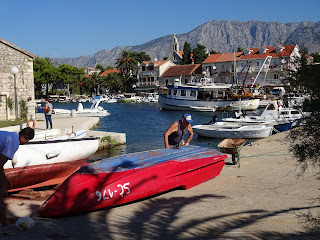Dubrovnik was the primary destination of our entire trip. We had been traveling for twenty days and had another stop planned; yet we were sad to leave Croatia. It meant that our trip was nearing its end. Next stop Dublin, Ireland. We had been to Ireland before and enjoyed it; now it would provide a weekend break in our long flights home to Denver.
We arrived late Friday afternoon, just time to rent a car and find our hotel. The plan was to head out Saturday morning taking the "scenic route", instead of the main highways, to visit attractions in the nearby mountains. In Ireland they drive on the left side of the road with the driver on the right side. That means the gear shift (manual trans.) is on your left. Roundabouts replace intersections. The road signs are unfamiliar or worse, written in Gaelic. All these changes are unfamiliar and counter to habit but can be mastered with some concentration.
What we discovered was that we couldn't handle the "scenic routes". "Scenic route" translates to a narrow winding road with no shoulders to pull off onto. The edges of the road are marked by low stone walls, the edge of a bridge, or dense shrubbery. Passing vehicles serve to trim the shrubbery and keep it from overgrowing the entire road (above us trees often closed over our view of the sky). Vehicles coming from the opposite direction would suddenly appear from an obscured corner ahead hurtling at us at seeming high speed (45mph) while I struggled to stay on the left side of the road center line, and Dawn watched our left rear-view mirror brushing against passing vegetation. It felt like a distorted road race video game but with no chance to hit reset; instead, the consequences of a miscue would be very real.
We finally reached our destination park and a parking lot! After a nice walk in the Wicklow Mountains, we set our course for the nearest major highway and headed back to our Dublin hotel, thoroughly humbled. A visit to the hotel bar steadied our nerves. After that we stayed on major roads and began to relax and feel more confident. Hotel staff were sympathetic and suggested closer destinations. Dublin has an amazing park, the 1750 acres of Phoenix Park. This park has a zoo, athletic fields, trails, concerts, marketplace, and guest quarters for visiting dignitaries (including Obama). We enjoyed a nice lunch at the farmer's market. We returned our rental car at the airport on Monday morning, fortunately with no damage, and were on our way to Toronto and onward.



































